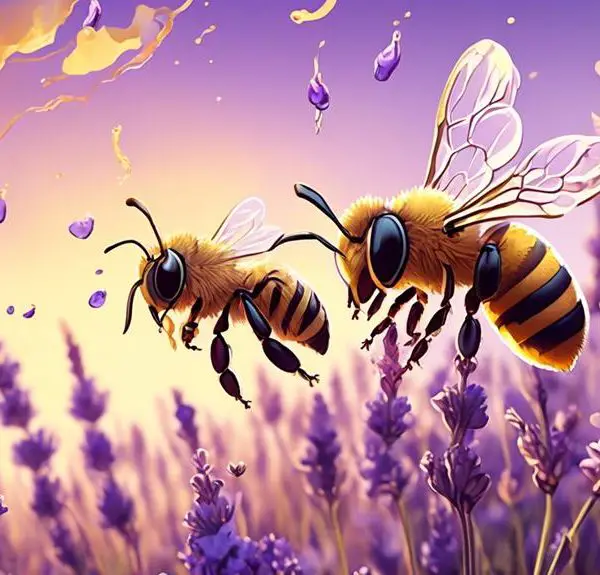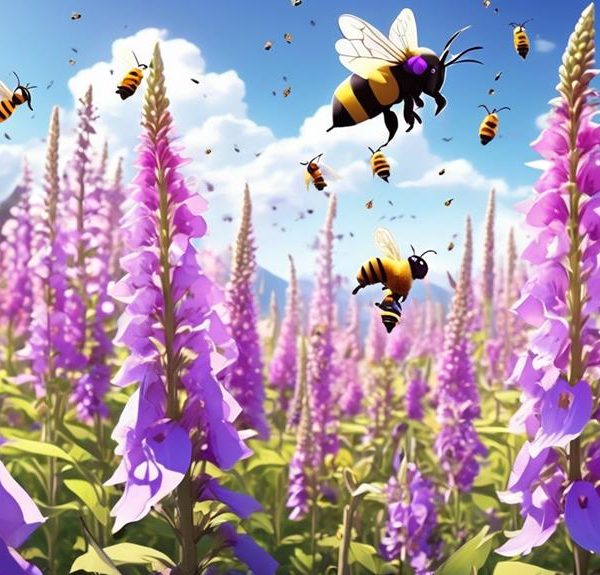An intriguing exploration into the complex relationship between bees and mothballs, revealing unexpected truths about these buzzing creatures.
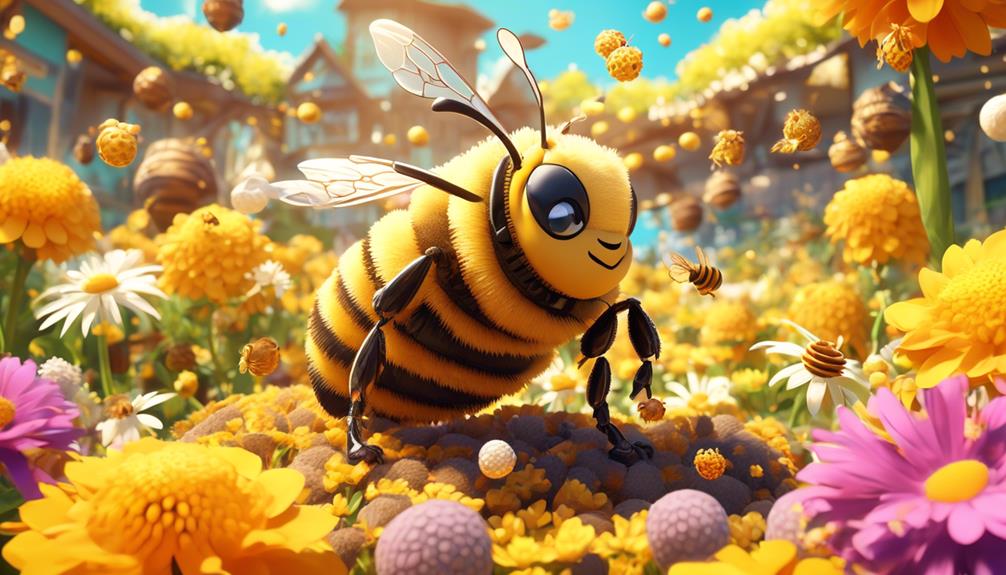
Do Bees Like Mothballs?
Imagine you've just discovered a buzzing hive nestled in your backyard tree. You're pondering if mothballs, a common pest deterrent, could be used to encourage these unwelcome guests to relocate.
However, the question isn't as straightforward as it might seem. The relationship between bees and mothballs is complex, based on intriguing aspects of bee behavior and the chemical composition of mothballs.
As you navigate this issue, you'll be surprised to uncover some unexpected truths that shed light on the intricate world of these buzzing creatures.
Key Takeaways
- Bees' olfactory receptors are highly sensitive and selective, and strong, unnatural odors like those from mothballs can disrupt their sensory perceptions.
- Mothballs' volatile organic compounds (VOCs) can have short-term effects on bees, such as confusion, disorientation, and erratic flying patterns, as well as long-term effects like chronic sensory impairment and decreased pollination efficiency.
- Immediate toxicity from mothballs can cause bee mortality, while continued exposure can lead to lowered immunity and colony collapse.
- There are alternatives to mothballs for bee control, such as using bee-friendly plants, physical barriers, non-toxic pesticides, and professional bee relocation, which protect bees and contribute to conservation efforts.
Understanding Bee Behavior

To truly grasp why bees might be attracted to or repelled by mothballs, it's crucial to delve into their behavioral patterns and sensory perceptions. Bees, particularly honeybees, exhibit intricate social structures and communication methods. They're predominantly guided by their sense of smell, using pheromones to communicate within their hive and to locate flowers for nectar.
Mothballs, primarily composed of naphthalene or paradichlorobenzene, emit a strong, distinctive odor. You may find it unpleasant, but what about bees? This is where it gets interesting. Bees' olfactory receptors are highly sensitive and selective. They're finely tuned to detect floral scents and pheromones, which are crucial for their survival. However, the chemical odor of mothballs doesn't align with these natural scents.
In fact, research suggests that certain strong, unnatural odors, such as those from mothballs, can disrupt bees' sensory perceptions, potentially interfering with their ability to navigate and communicate effectively. Therefore, it's unlikely that bees would be attracted to mothballs. Instead, they may be repelled or disoriented by them.
Gaining this understanding of bee behavior and sensory perception is key in exploring their interaction with mothballs.
The Composition of Mothballs

Peeling back the layers of a mothball, you'll find it's primarily made up of either naphthalene or paradichlorobenzene, two chemicals known for their strong and distinctive odors. Both of these compounds belong to a class of chemicals known as volatile organic compounds (VOCs) due to their high vapor pressure at room temperature.
Naphthalene, the older and more traditional ingredient, comprises two benzene rings fused together and is a product of coal tar or petroleum distillation. This white crystalline substance is known for its distinctive pungent smell, and it sublimes, transitioning from a solid to a gas without a liquid phase, making it effective in pest control.
Paradichlorobenzene, on the other hand, is a relatively newer addition to mothballs. It's a chlorinated derivative of benzene, with two chlorine atoms attached to the benzene ring. Unlike naphthalene, it's less likely to catch fire and has a less pungent smell. However, it's more toxic and can cause harm to the human nervous system if inhaled or ingested in large amounts.
Understanding the composition of mothballs helps you gauge their potential effects on bees and other organisms.
The Impact of Mothballs on Bees
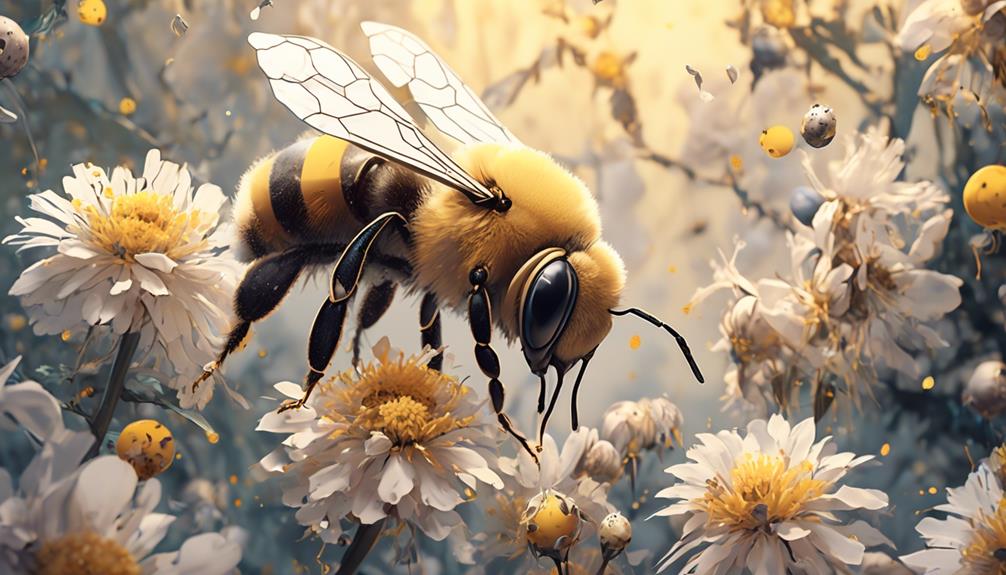
When considering the impact of mothballs on bees, it's important to note that these insects, much like humans, are affected by the volatile organic compounds present in these pest deterrents. The chemicals, primarily naphthalene and paradichlorobenzene, can disrupt their sensory perception and behavior, leading to detrimental consequences.
Impact | Short-Term Effects | Long-Term Effects |
|---|---|---|
Sensory Perception | Confusion, disorientation | Chronic sensory impairment |
Behavioral Changes | Erratic flying patterns | Decreased pollination efficiency |
Health Impacts | Immediate toxicity, mortality | Lowered immunity, colony collapse |
Mothballs' pungent scent, designed to deter pests, can interfere with bees' ability to locate flowers and nectar, causing confusion and disorientation. This can lead to erratic flying patterns, reducing their ability to efficiently pollinate plants. More seriously, these chemicals can cause immediate toxicity, leading to bee mortality.
Over time, continued exposure can lead to chronic sensory impairment, preventing bees from performing their vital pollination role effectively. It can also lower their immunity, making them more susceptible to diseases and pests, which can result in colony collapse.
Alternatives to Mothballs for Bee Control
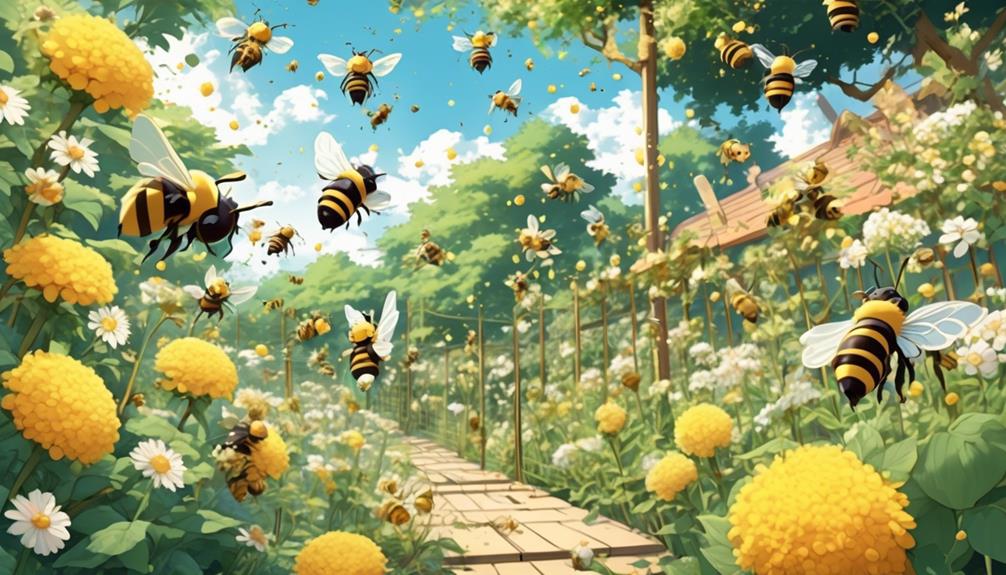
Given the harmful effects of mothballs on bees, it's crucial that we explore alternative methods of bee control that are less damaging to these essential pollinators.
A viable option is the use of bee-friendly plants. These plants, such as spearmint and thyme, naturally repel bees without causing harm.
You can also use physical barriers to deter bees. For instance, netting or screens around your outdoor space will prevent bees from entering.
Another approach is the use of non-toxic, bee-safe pesticides. These products are specially formulated to repel bees without causing them harm. They're typically made from natural ingredients like essential oils or vinegar. It's important to apply these pesticides correctly to ensure maximum effectiveness and minimal harm to bees.
Lastly, consider professional bee relocation. Skilled beekeepers can safely remove and relocate bee colonies, providing them a new home while solving your bee problem. This method not only protects the bees but also contributes to their conservation.
The Environmental Effects of Mothballs
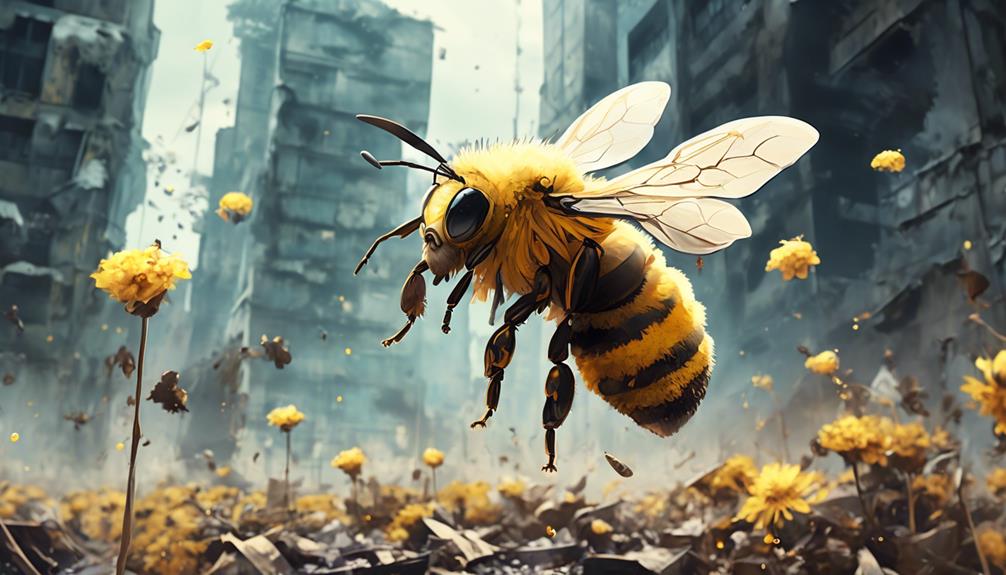
Surprisingly, mothballs aren't just harmful to bees; they also pose significant environmental hazards. When you use mothballs, you're releasing volatile organic compounds (VOCs) into the atmosphere. These VOCs aren't just harmful to you and any nearby bees; they also contribute to air pollution.
The naphthalene and paradichlorobenzene, active ingredients in mothballs, easily sublimate into the air. This results in their contribution to ground-level ozone formation, a key component of smog. Once in the air, these chemicals can travel long distances, spreading their harmful effects.
Also, if improperly disposed of, mothballs can contaminate soil and groundwater. Naphthalene is a possible human carcinogen, and paradichlorobenzene can cause damage to the liver and kidneys. These chemicals can leach into the soil, damaging plants and potentially entering the food chain.
Mothballs also pose a hazard to aquatic life. If they find their way into rivers or lakes, the chemicals can be toxic to fish and other aquatic organisms. The overall biodiversity can suffer as a result.
Frequently Asked Questions
What Are Some Other Natural Predators of Bees?
You're curious about natural predators of bees, aren't you? It's not just humans that bees have to worry about.
Birds, spiders, and various insects such as dragonflies and praying mantises also prey on bees. Even certain species of mammals, like bears and badgers, can pose a threat. These predators often target bees for their nutritious honey and protein-rich larvae.
However, bees don't stand defenseless, they've their stingers to protect themselves.
How Do Bees Communicate Within Their Colonies?
Bees communicate within their colonies using a complex language of dance and pheromones. When a worker bee finds a rich food source, it'll perform a 'waggle dance' to share the location with others. This dance involves specific movements and directions that correlate to the food's distance and direction.
Pheromones are also used to signal danger, to communicate roles, and even to decide on a new hive location. It's truly fascinating how detailed bee communication can be.
Can Bees Smell Mothballs?
You're right to wonder if bees can smell mothballs.
Bees actually have an incredibly acute sense of smell. However, they're not fans of the strong odor that mothballs give off.
In fact, beekeepers sometimes use mothballs to deter bees from setting up hives in unwanted places.
It's a smell they clearly don't like, much like how we'd react to a particularly pungent perfume.
Are There Any Specific Species of Bees That Are More Affected by Mothballs?
You're asking if specific bee species are more affected by mothballs. Currently, there isn't a ton of research on this.
However, it's known that bees, in general, don't like naphthalene, the main ingredient in mothballs. They're deterred by its strong scent. It's likely that this applies to all species, but more detailed studies would be needed to confirm if certain types are more sensitive than others.
What Other Household Items Can Repel Bees?
You're wondering about other household items that can repel bees. Interestingly, bees dislike strong smells like vinegar, garlic, and peppermint.
A solution of water and peppermint oil, for instance, can deter them when sprayed around your property. Similarly, a dish of vinegar left outside can keep them at bay. Garlic powder sprinkled around your garden is also effective.
Conclusion
In conclusion, bees don't fancy mothballs. The naphthalene or paradichlorobenzene in mothballs is toxic to them. While these substances can deter bees, they're not an ideal solution. They pose environmental risks and aren't specific to bees.
Explore bee-friendly alternatives for control and remember, bees play a crucial role in our ecosystem. It's important to balance your bee concerns with the broad environmental impacts.

